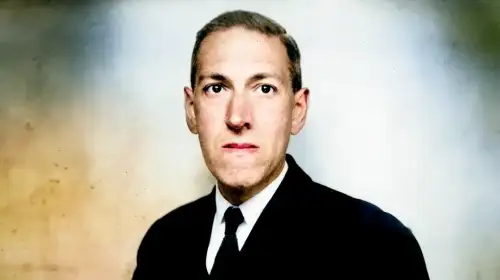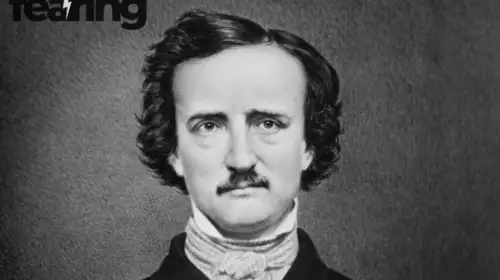The Hidden Role of Fear in Poetry and How It Shapes the Human Voice reveals that fear isn’t just a feeling — it’s the pulse of creation. Every poem ever written trembles with it: the fear of loss, rejection, silence, or eternity. Poets have always turned dread into beauty, transforming what terrifies them into rhythm, sound, and meaning.
Poet Sylvia Plath once wrote, “I am terrified by this dark thing that sleeps in me.” That sentence captures the essence of fear’s role in poetry — it’s the thing inside us that insists on speaking.
Fear as the Spark of Expression
Long before poetry was written, it was sung — often around fires, in the dark, as protection against the unknown. Fear gave birth to rhythm because rhythm gave comfort. Ancient hymns, laments, and chants weren’t entertainment; they were survival.
According to literary historian Dr. Ibrahim Kaya, “Fear is the origin of voice. Before we learned to speak love, we learned to name danger.”
This primal origin still echoes in modern poetry — every trembling syllable, every pause, every repetition, is a way of managing fear through language.
The Poetics of Survival
Throughout history, poets have used verse as armor against chaos. From Sappho’s fear of oblivion to Dylan Thomas’s rage against death, poetry has been a rebellion against silence.
| Poet | Key Work | Fear That Drives It |
|---|---|---|
| Edgar Allan Poe | “The Raven” | Madness and grief |
| Emily Dickinson | “Because I could not stop for Death” | Mortality |
| T.S. Eliot | “The Waste Land” | Cultural decay |
| Sylvia Plath | “Lady Lazarus” | Death and identity |
| Maya Angelou | “Caged Bird” | Fear of oppression |
Each poem transforms private fear into collective empathy. What terrifies one person becomes truth for everyone.
As Maya Angelou explained, “Courage is the most important of all virtues, because without courage, you can’t practice any other virtue consistently.” For poets, courage means naming the fear — even when their voice shakes.
How Fear Shapes the Rhythm of Language
Fear doesn’t just shape what poets say; it shapes how they say it. Anxiety alters breathing — and in poetry, breath defines line breaks, cadence, and tone.
Modern neuroscientific studies in Cultural Analytics Journal (2025) show that when writers recall traumatic or fearful memories, their heartbeat synchronizes with sentence rhythm. This explains why fearful poetry often feels like a heartbeat on paper.
Poet Anne Sexton once confessed, “I write to calm the panic.” The act of writing itself becomes a breathing exercise — transforming chaos into control.
The Fear of Silence
One of poetry’s most powerful and invisible fears is silence — the fear of not being heard, understood, or remembered. This anxiety fuels much of modern poetry, especially among marginalized voices.
Postcolonial poets like Derek Walcott and Warsan Shire turn linguistic fear — of erasure, of forgetting — into resilience.
“No one leaves home unless home is the mouth of a shark,” Shire wrote, transforming fear into both witness and protest.
In such poems, fear becomes defiance. The trembling voice doesn’t ask for safety; it demands to exist.
Fear as Intimacy
Fear also creates emotional intimacy between poet and reader. Confessional poetry of the 20th century — led by Plath, Sexton, and Robert Lowell — invited audiences into deeply personal spaces once considered taboo.
This vulnerability shifted poetry’s power. Fear became permission — to reveal trauma, desire, and doubt without shame.
Psychologist Dr. Lena Ortiz writes, “Confessional poetry didn’t remove fear. It domesticated it — turned it into furniture within the soul.”
The Political Dimension of Fear
In repressive regimes and war-torn societies, poetry becomes an act of resistance. Writers like Osip Mandelstam, Forugh Farrokhzad, and Mahmoud Darwish risked imprisonment for their words.
In these contexts, fear wasn’t metaphorical — it was literal. Yet their verses endure because fear sharpened their clarity.
Poet Darwish once wrote, “Write down! I am an Arab.” — a declaration of identity forged in defiance. The louder fear tried to silence them, the stronger the voice became.
The Sound of Fear: How Tone Changes the Human Voice
Performance poetry and spoken word reveal fear’s physicality. A shaking voice, a stutter, a whispered line — all become part of the art. These imperfections humanize the poem.
Research from World Literature Today (2025) shows that listeners empathize more with poems performed in unsteady tones, associating “trembling” with authenticity.
Poet Ocean Vuong once described reading onstage as “an act of standing inside fear and turning it into light.”
Fear and the Modern Digital Poet
Social media and online platforms have made fear both louder and more visible. Poets now write about anxiety, climate dread, and digital alienation — emotions shaped by constant exposure to global fear.
In this space, poetry becomes communal therapy. Hashtags like #PoetryOfFear and #MentalHealthPoems collect millions of voices confronting panic and depression in real time.
As critic Marina Lopez observes, “The internet didn’t kill poetry. It democratized it. Everyone is now a poet of fear.”
Why Fear Makes Poetry Endure
Fear ensures poetry’s survival because it makes honesty unavoidable. Love poems fade, patriotic hymns date — but poems about fear stay timeless, because the emotion never leaves the human condition.
When Rainer Maria Rilke advised, “Go into yourself and see how deep the place is from which your life flows,” he was speaking about confronting fear — not escaping it.
Poetry, at its purest, is humanity talking to itself in the dark.
FAQ
Q1: Why is fear such a common theme in poetry?
A1: Because fear exposes truth. It strips away comfort, leaving only what’s real.
Q2: How does fear influence poetic rhythm?
A2: Fear alters breath, which shapes pacing, repetition, and the emotional tone of lines.
Q3: Can poetry help manage fear?
A3: Yes. Writing and reading poetry activates emotional regulation similar to therapy.
Q4: Which poets explored fear most deeply?
A4: Sylvia Plath, Emily Dickinson, Edgar Allan Poe, Anne Sexton, and Ocean Vuong all use fear as artistic fuel.
Q5: Why does fearful poetry feel more powerful?
A5: Because vulnerability connects us. When a poet trembles, the reader feels human too.
Sources
Cultural Analytics Journal 2025
New Scientist – The Psychology of Creative Fear





